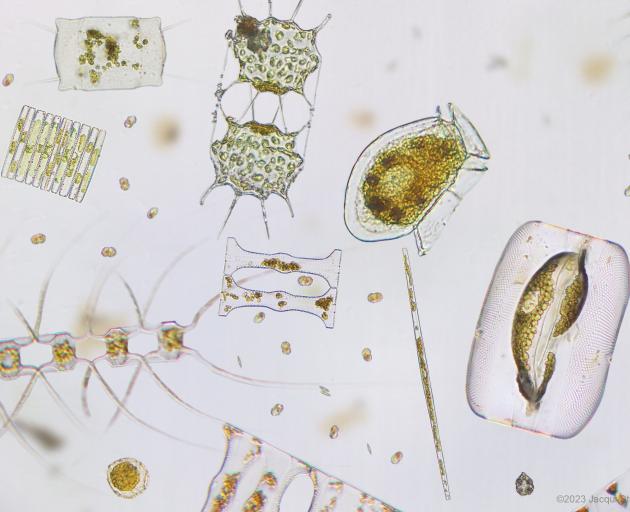

However, coastal environments are among the hardest hit by climate change. More extreme weather events are causing increased ocean contamination from runoff, higher sea temperatures, lower pH and the appearance of new species around our coastlines. These factors make an already variable environment even more unpredictable, making life more challenging for both aquaculture farmers and their creatures.
The impacts of climate change are even being felt by the smallest inhabitants of our oceans. Phytoplankton (also known as microalgae) are microscopic plants that form the foundation of the aquatic food web providing food for tiny animals (zooplankton), small fish and molluscs such as mussels and oysters. What if the nutritious phytoplankton that once enabled our seafood to grow to a harvestable size within a year no longer cut the mustard? What if the once well-balanced and healthy community of phytoplankton becomes more frequently overrun by harmful species instead?
We already know that problematic species of phytoplankton that form harmful algal blooms are common in both the North and South Island, particularly in the sheltered bays where mussel farming occurs, such as the Marlborough Sounds. Harmful algal blooms are increasing in frequency, duration and prevalence as the climate changes. Climate change is also increasing the geographical range of harmful bloom-forming species. We are now seeing species that were historically only present in the warmer waters of the North, spreading southwards. This can pose a problem to other marine organisms that have not encountered these species before, making them more vulnerable.
Our research has shown that toxic phytoplankton can harm all life stages of mussels. This includes everything from sperm and eggs to embryos and the juvenile mussels looking to settle in a natural bed or on mussel farming ropes. To make matters worse, toxic phytoplankton can occur during marine heatwaves, placing the mussels in an even more stressful environment.

So, what can we do about this?
The first step is to gain an understanding of how our phytoplankton communities look now and how they might look under different climate-change scenarios. This will enable us to forecast and investigate the downstream effects of this change on mussels, oysters and other marine invertebrates.
Understanding why these changes occur will help us identify remedies. Work to uncover the answers to these questions is being done by the Cawthron Institute, in Nelson, in collaboration with the University of Otago and it is hoped we can continue this work into the future. With knowledge comes power, and we hope this research can help us successfully navigate a changing climate and support the goals of our aquaculture industry.
Hannah Greenhough is a PhD student at the Department of Biochemistry, University of Otago and Cawthron Institute in Nelson. Her project is funded by an Otago University PhD scholarship and Ministry of Business, Innovation and Employment (MBIE) through the Cawthron Shellfish Aquaculture Research programme.











